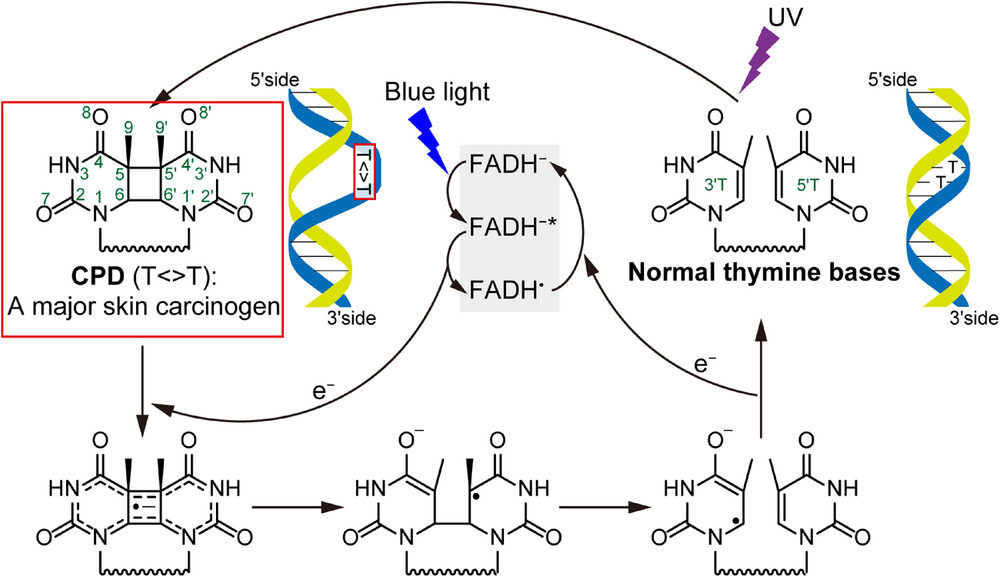
 中央研究院 生物化學研究所
中央研究院 生物化學研究所
Genome integrity is threatened by solar ultraviolet (UV) light, which reacts with adjacent DNA pyrimidine bases to produce undesirable covalent bonds. As the most common UV-induced lesion, cyclobutane pyrimidine dimers (CPDs) have been strongly linked to cancer. For example, patients with xeroderma pigmentosum, a genetic defect in DNA repair, are at increased risk of skin cancer.1 To combat CPD, Human beings use a complex enzymatic pathway called nucleotide excision repair (NER). However, most other organisms employ a much simpler and more effective mechanism where a single protein, CPD photolyase, recognises and repairs the CPD lesion.2 CPD photolyases are extremely efficient, because they use the energy of solar blue light to repair UV-photolesions. Because of the simplicity and speed of the reaction by CPD photolyase, the clinical application of CPD photolyase has been thoroughly explored.3
